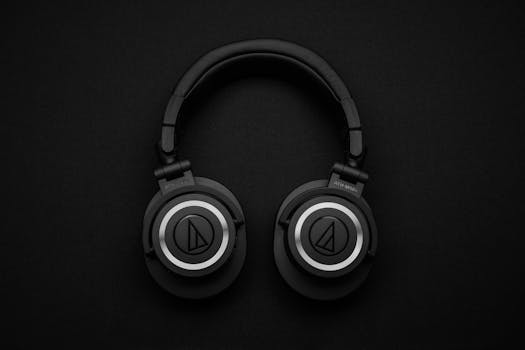ANC vs Passive Isolation: Which Budget Headphones Should You Buy?
9/20/2025 · Headphones · 7 min

TL;DR
- Active Noise Cancellation (ANC) reduces steady background noise like airplane hum or HVAC. On a budget, expect variable performance and some hiss.
- Passive isolation relies on fit and materials to block noise. It is predictable, requires no power, and often preserves sound neutrality.
- Best budget picks by use case:
- Frequent travel or noisy offices: Over ear ANC headphones with good seal and long battery life.
- Casual commuting and workout: In ear passive buds with secure fit and water resistance.
- Critical listening on a budget: Passive over ear or on ear with tight seal and neutral tuning.
How ANC Works
- Budget ANC uses small microphones outside and inside the earcup to sample ambient sound and generate an inverse waveform. This cancels many low frequency and steady noises.
- Expect better performance on steady sounds like engines and air conditioning; ANC struggles with sudden vocal frequencies and high pitched noises.
- Cheap ANC may add a low level hiss, and toggling ANC can slightly alter the sound signature.
Fit, Seal & Comfort
- Passive isolation depends on physical seal. Good memory foam ear pads or well seated ear tips will block a lot of noise without electronics.
- Over ear designs usually isolate better than on ear. In ear tips with multiple sizes or foam tips provide the best passive blocking per dollar spent.
- Comfort matters for long sessions. Lightweight clamping force and breathable pads reduce fatigue.
Sound Signature & Trade Offs
- ANC can change perceived bass and midrange. On budget models you may notice a warmer or 'veiled' midrange with ANC on.
- Passive models tend to preserve the natural tonal balance of the drivers, which is preferable for accurate listening.
- Driver type and tuning are still key. Look for reviews measuring frequency response or user impressions for clarity and detail.
Battery, Latency & Features
- ANC needs power. Typical budget ANC battery life is 15–30 hours with ANC on; disabling ANC can stretch runtimes significantly.
- True wireless buds with ANC usually offer 4–8 hours per charge plus case charges.
- Gamers should watch latency: some ANC or processing modes can add delay. Look for low latency or game mode if you plan to play competitively.
Connectivity & Codecs
- Bluetooth 5.x is common and offers more stable range and battery improvements.
- Codec support matters for audio quality: prefer aptX, aptX Adaptive, or AAC over plain SBC when possible. Budget gear may be limited to SBC and AAC.
- Multipoint pairing, companion apps, and firmware updates are nice extras for tuning ANC and EQ.
Ports, Charging & Durability (quick guide)
- USB-C is becoming standard and simplifies charging. Micro USB is still found on some cheap sets but avoid it if possible.
- Check IP rating for workouts: IPX4 is splash resistant; IPX7 offers better protection for sweat and rain.
- Removable cables or replaceable pads extend lifespan for trad wired or hybrid models.
Which Should You Buy?
- Choose ANC if: you often face constant background noise and value active reduction for focus or travel, and you accept some battery and sound trade offs.
- Choose passive isolation if: you prefer predictable sound, no charging, and often need the most natural audio for music or monitoring.
Buying Checklist
- Use case: travel, office, gym, or critical listening.
- Form factor: over ear for best isolation; in ear for portability and workouts.
- ANC performance: look for review measurements or user feedback on low frequency cancellation.
- Battery: 15+ hours for daily use; 20+ for frequent travelers.
- Codecs: aptX/aptX Adaptive or AAC for better wireless audio.
- Fit: multiple ear tip sizes or plush ear pads.
- Durability: USB-C, good accessories, and warranty.
Bottom Line
On a tight budget, passive isolation often gives the best predictable sound and no hassle. If you travel or work in loud environments, a decent budget ANC pair can be transformative for focus and comfort, but be realistic about trade offs in battery, possible hiss, and slight changes to tonal balance. Choose based on your primary use and whether you value active noise reduction more than pure, unaltered sound.
Found this helpful? Check our curated picks on the home page.